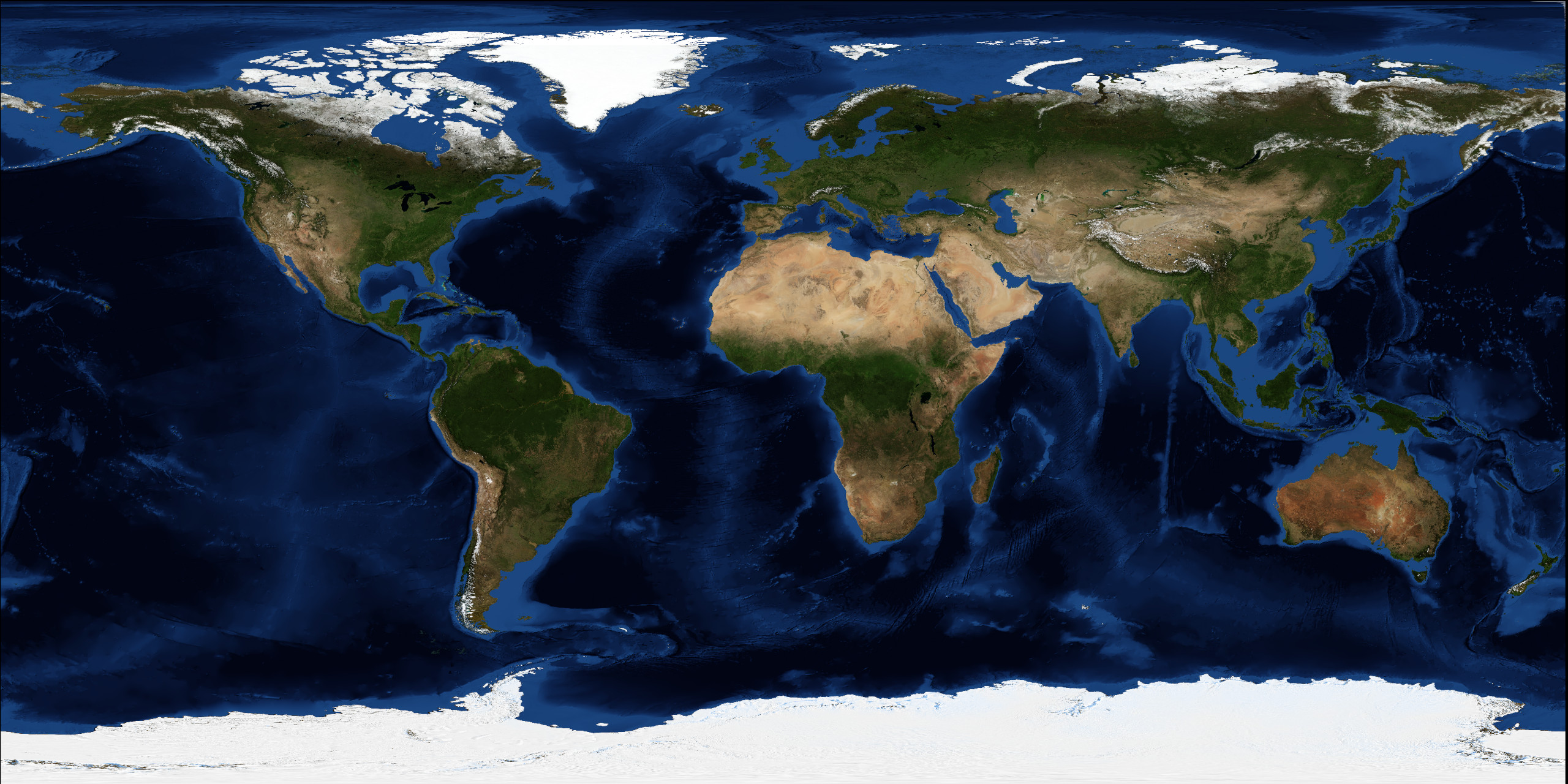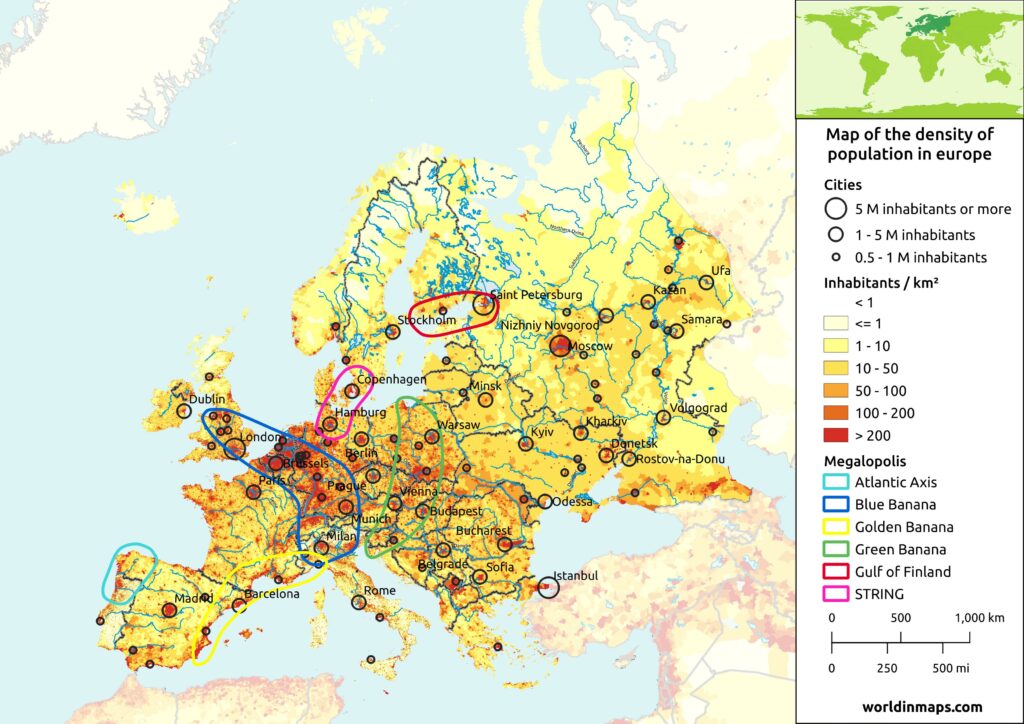
Continents / Europe / Population
Population size
Europe had a population of 747 636 045 in 2020, which makes the European continent the third most populated continent in the world after Asia and Africa. In 1950, the population of the European continent was around 550 million of people. Since the beginning of the 90th, the growth of the population has slow down, and was even slightly negative at the end of the 90th.
Density of population

Europe is the second most densely populated continent, after Asia. In 2020, Europe had a density of population of 72.9 inhabitant per km2 (188 inhabitants / sq mi). But there is clearly a big difference between countries and regions.
The map shows that most of the population are located around the Rhine River and on a larger extends in the European Megalopolis (also called the Blue Banana or the Liverpool-Milan Axis). This megalopolis has a population of around 111 million and it extends from the region of Milan in Italy until Liverpool in the United Kingdom.
Next to the Blue Banana, Europe has 5 other megalopolis or megaregions. A second big one is the Golden Banana that extends from Cartagena in Spain until Genoa in Italy. This megalopolis is located along the coast of the Mediterranean Sea of Spain, France and northern Italy. This megaregion is also called the Sun Belt.
The Atlantic Axis is the megaregion located along the Atlantic Ocean in the northern part of Portugal and the northwest part of Spain.
The STRING megalopolis extends from Hamburg in Germany until Oslo in Norway and covers 4 countries (Germany, Denmark, Sweden and Norway). Guttenborg, Malmö and Copenhagen are located in this megaregion that covers an area of 14 million people.
Then, the Gulf of Finland megalopolis corresponds to the densely populated area on the coast around the Gulf of Finland. So it covers an area located in Finland, Russia and Estonia. This megaregion has 2 capitals in it: Helsinki and Tallinn. Saint Petersburg is also located in this megalopolis.
Finally, the Green Banana stretches from the coast of Croatia to the coast of the Baltic Sea in Poland. This megaregion is also referred as the Central European megalopolis because of its location in central Europe. This megalopolis has a population of 50 million people, but on a large area and so finally it brings a relatively low density of population. This megaregion has 6 capital cities in it: Zagreb, Ljubljana, Budapest, Vienna, Bratislava and Warsaw. Other main cities like Gdansk and Krakow are also located in this megalopolis.
Biggest cities in Europe
| Rank | City | Country | Population |
|---|---|---|---|
| 1 | Istanbul | Turkey | 15 840 900 |
| 2 | Moscow | Russia | 12 632 409 |
| 3 | London | United Kingdom | 9 002 488 |
| 4 | Saint Petersburg | Russia | 5 376 672 |
| 5 | Berlin | Germany | 3 664 088 |
| 6 | Madrid | Spain | 3 305 408 |
| 7 | Kyiv | Ukraine | 2 920 873 |
| 8 | Rome | Italy | 2 844 750 |
| 9 | Bucharest | Romania | 2 161 347 |
| 10 | Paris | France | 2 139 907 |
Istanbul is the biggest city of Europe, but the city is divided in 2 between a part on the European continent and another part on the Asian continent. 25 districts are located on the European site, for a population of 10 224 323 people and 14 districts are located on the Asian part for a population of 5 616 577 people.
When we count the European population of Istanbul, it ranks second and Moscow is the most populated city totally located in Europe.
With the exception of Istanbul and Saint Petersburg, all the other cities are capital cities.